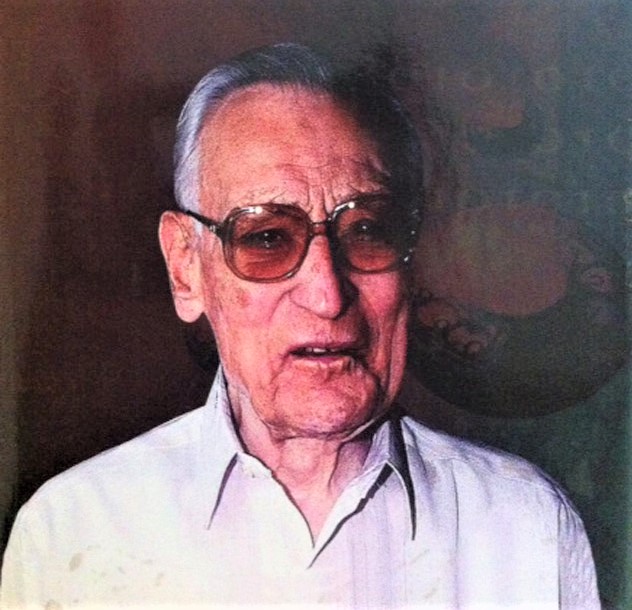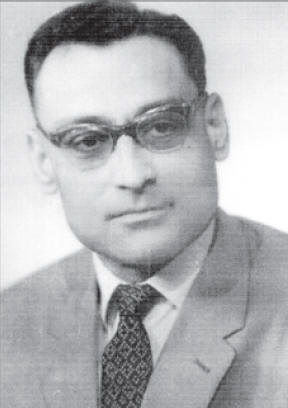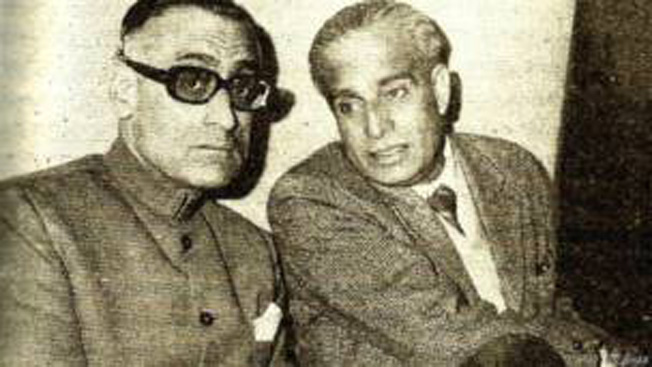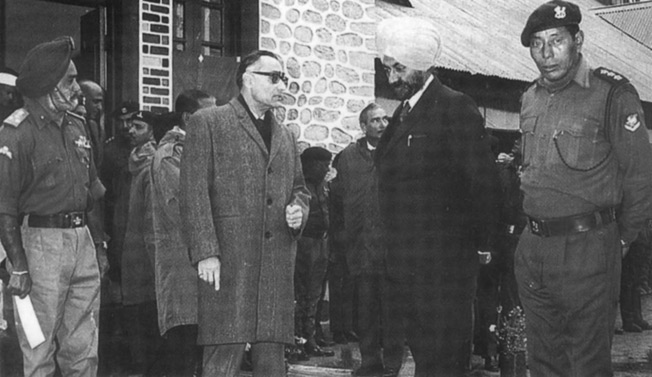The Secret Life of a Spymaster: Remembering R. N. Kao, the Legendary Founder Chief of RAW
Such was the sway of the founding father of RAW, that even the intelligence agents in his unit were know as the "Kaoboys."

“R.N. Kao is the most remarkable spy in the history of modern India. If not for his contribution to India’s formidable RAW, South Asia’s geographic, economic and political landscape would have been markedly different.” — Sri Lanka’s Rohan Gunaratna, one of the few journalists to interview the former RAW chief.
Rameshwar Nath Kao – “Ramji” to his relatives, friends and colleagues – was the founding father of the Research & Analysis Wing, better known as RAW (India’s external intelligence agency). A legendary spymaster, he built up RAW into a professional intelligence organisation that, within three years of its creation, played a formidable role in changing the face of South Asia in 1971.
Here is the little known story of spymaster R. N. Kao and his monumental role in the world of Indian intelligence.

Photo Source
During the 1962 border war with China, India had been mauled militarily principally because it lacked intelligence on heightened Chinese activities along its northern frontier. Though the Intelligence Bureau had a foreign information-gathering wing, it was inadequate and, after the 1965 war with Pakistan, the need for real-time foreign intelligence had become a strategic necessity.
On September 21, 1968, Prime Minister Indira Gandhi bifurcated the Intelligence Bureau (IB) to form Research & Analysis Wing (RAW). Its mandate: monitor the world in general and South Asia in particular. Rameshwar Nath Kao, then a deputy director in the Intelligence Bureau, was appointed by Prime Minister Indira Gandhi as the first head of RAW.
Kao was the natural choice to lead this strategically important organisation. Handpicked by Jawaharlal Nehru himself, with whom he travelled abroad frequently, Kao had made quite a name with his work in the Intelligence Bureau.
In Ghana, the young IPS officer had set up an intelligence agency at the request of President Kwane Nkrumah and had worked closely with the Chinese to merit a letter of recommendation from Chinese Premier Zhou En Lai.

Photo Source
Born in Benares, north India, in 1918 into a prosperous Kashmiri Brahmin household, Rameshwar Nath Kao studied for an MA in English literature at the nearby Allahabad University and joined the Indian Police in 1939. Shortly before Indian independence in 1947, Kao joined the Directorate of Intelligence Bureau that was formalised by the colonial administration in 1920.
During the early years of India’s freedom movement, the Bureau had run broadly along the lines of the British Security Service MI5. With the political turmoil that led to the Second World War, the Bureau’s responsibilities were increased to include the collection of intelligence along India’s borders. Kao was one of the first Indians at the Bureau, working alongside the majority British officers.
During the Queen’s first visit to independent India in the early 1950s, Kao was assigned to head her security detail. At a reception in Bombay, Kao dived and caught a bouquet he saw being flung at the Queen from the corner of his eye, fearing it might be a bomb. In good humour, the Queen drolly remarked, “Good cricket.”

Photo Source
When Kao took over the reins of RAW in 1968, things had begun heating up in the subcontinent. He raised RAW broadly along a blueprint that he had given the government, with 250 hand-picked operatives and analysts. For years, shadowy RAW operatives were known as “Kaoboys”.
Interestingly, this trend led to a rare demonstration of Kao’s sense of humour – when he heard about his RAW agents being described as “Kaoboys,” he promptly commissioned a fibre glass sculpture of a cowboy and installed it in the foyer of the RAW building!
Also Read: The Fascinating Tale of Subhash Chandra Bose’s Secret Submarine Journey from Germany to Japan
The razor-sharp, decisive and often-ruthless Kao was also one of the main architects behind East Pakistan’s breaking away to become Bangladesh in 1971. Under Kao, the RAW helped Mukti Bahini, the liberation force of Bangladesh, to fight against political and ethnic domination by the military junta of West Pakistan. This precipitated the third war between the neighbours, which lasted for 17 days in 1971.
India emerged victorious and Bangladesh was born. In Kao’s assessment, the disappearance of East Pakistan eliminated a grave security threat to India from its eastern flank (along which China, at that time, loomed menacingly). This was the zenith of Kao’s success and made him an immediate hero in Delhi’s power circles.

Photo Source
Three years later, Kao warned the prime minister of a possible coup in the tiny Himalayan kingdom of Sikkim. The Cold War was at its height and the global and regional situation complex and fraught with intrigue, the sort of situation that produced the best from Kao. Learning from experiences of the 1962 Indo-China war, under his guidance, RAW played a major role in the merger of Sikkim into India before the Chinese forces could attempt a hostile takeover. Delhi had publicly acknowledged the good work done by RAW at that point.
You May Like: The Untold Story of a Legendary Band of Men Who Laid the Foundation for the Indian Air Force
Kao’s tenure lasted for nearly a decade and marks the period when an entire generation of Indian intelligence professionals were trained to protect the nation. Well linked in the international intelligence community, Kao’s professionalism was well regarded by his colleagues.
Count Alexandre de Marenches, erstwhile head of the French external intelligence agency, or SDECE (Service For External Documentation And Counter-Intelligence) as it was then known, named Kao as one of the ‘five great intelligence chiefs of the 1970s’. About Mr. Kao, whom he knew well and admired, the Count remarked:
“What a fascinating mix of physical and mental elegance! What accomplishments! What friendships! And, yet so shy of talking about himself, his accomplishments and his friends.”

Photo Source
After Kao retired in 1977, he functioned as Security Advisor to the Cabinet (in effect, the first National Security Advisor), advising the new prime minister, Rajiv Gandhi, on intelligence matters and liaising with secret-service chiefs around the world.
He played an important role in setting up the Policy and Research Staff as an in-house think tank, the forerunner to today’s national Security Council Secretariat. He also gave shape to National Security Guard (NSG), India’s elite security force unit.
The following note by the Chairman of Joint Intelligence Committee K.N Daruwala sums up the man R.N Kao was –
“His contacts the world over, particularly in Asia—Afghanistan, Iran, China, you name it—were something else. He could move things with just one phone call. He was a team leader who rode out notorious inter-departmental and inter-service rivalries, which is commonplace in India.”
A shy and private man who shunned publicity, Kao was rarely seen in public. He didn’t pose for photographs even during wedding ceremonies of friends or relatives. Though asked many times, he refused to write his memoirs, he knew too much to make a public statement or write a book.
While much has been said about his keen and sharp intellect, few know the fact that India’s first intelligence chief was also an accomplished sculptor, who produced some magnificent sculptures of horses in keeping with his passion for wildlife. He was also known for his fine collection of Gandhara paintings.
R N Kao passed away in 2002, robbing the country of one whose contribution to building the nation a safe and secure India is immeasurable and yet little known by most Indians. The legendary spymaster laid the foundations of modern intelligence in India, an edifice that protects the nation to this day.
Also Read: The Forgotten Spy: The Untold Story of India’s Youngest Covert Agent, Saraswathi Rajamani
Like this story? Have something to share? Email: contact@thebetterindia.
NEW! Log into www.gettbi.com to get positive news on WhatsApp.
If you found our stories insightful, informative, or even just enjoyable, we invite you to consider making a voluntary payment to support the work we do at The Better India. Your contribution helps us continue producing quality content that educates, inspires, and drives positive change.
Choose one of the payment options below for your contribution-
By paying for the stories you value, you directly contribute to sustaining our efforts focused on making a difference in the world. Together, let’s ensure that impactful stories continue to be told and shared, enriching lives and communities alike.
Thank you for your support. Here are some frequently asked questions you might find helpful to know why you are contributing?


This story made me
-
97
-
121
-
89
-
167











